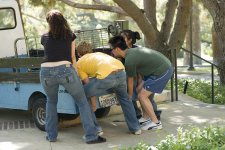MartinL
MartinL
I've been taking lots of photos that superficially meet at least some "street photography" criteria. Many of these are compositionally pleasing and technically decent. Yet, even the best I mostly toss. It sure is rare for me to come up with one that I think is worth saving (not to mention, sharing).
The "decisive moment," (for me, I am learning) must exist at the center of a historical or emotional story. The moment I capture must evoke a narrative that engages the viewer who will complete the story. Temporally, the viewer must supply a past and/or a future to the moment I provide.
This photo: M8; CV75/2.5.
Martin
The "decisive moment," (for me, I am learning) must exist at the center of a historical or emotional story. The moment I capture must evoke a narrative that engages the viewer who will complete the story. Temporally, the viewer must supply a past and/or a future to the moment I provide.
This photo: M8; CV75/2.5.
Martin


